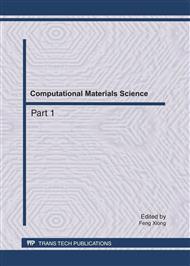p.129
p.138
p.143
p.148
p.154
p.160
p.166
p.172
p.178
Numerical Simulation of Crude Pipeline Using Moisture-Heat Coupled Thermal Equation
Abstract:
Temperature plot is crucially important for numerical simulation of high waxy crude pipeline because of its non-Newtonian behavior at low temperature. As the fluid temperature drops below than the wax appearance temperature, the viscosity of the crude increases dramatically. Thus the needed pressure has a possibility to reach the maximum allowable pressure and cause a potential risk for the pipeline itself. To avoid this, numerical simulation of the temperature plot along the pipeline is necessary in order to obtain accurate information. However, as the temperature governing equation is a non-linear equation and the soil temperature field is also being involved. It is required to solve the surrounded soil temperature field. In the paper, the governing equation for one dimensional crude pipeline and the new moisture-heat equation for the soil (porous medium) are presented and the iteration algorithm to solve this coupled equation is given. With the algorithm and the coupled heat-moisture equations, the numerical results are obtained and have a very precise coincidence with the experimental results. Then a reliability based method is used to evaluate the flow safety of one pipeline in China. With the presented model and obtained results, the flow safety evaluation results show that the safety of the crude pipeline is assured in the test cases.
Info:
Periodical:
Pages:
154-159
Citation:
Online since:
July 2011
Authors:
Price:
Сopyright:
© 2011 Trans Tech Publications Ltd. All Rights Reserved
Share:
Citation:


